Easy As ABC
Muse Science Magazine for Kids
|July/August 2018
In 2012, a Japanese mathematician named Shinichi Mochizuki announced that he finally knew the abc’s.

He wasn’t talking about the Roman alphabet—he has known English for most of his life. He was talking about a mathematical statement called the abc conjecture. (In mathematics, a conjecture is a statement that some mathematicians believe to be true but no one has proved for certain. When it is proved for sure, it is called a theorem.)
Mochizuki studies number theory, a branch of mathematics. Mathematics is an incredibly broad, diverse subject. Mathematicians study everything from the random way stock markets and electrons seem to move to the properties of exotic shapes in unimaginable dimensions. But if you ask someone on the street what a mathematician does, the guess will probably be closest to what a number theorist does. They study the properties of numbers, especially the positive whole numbers: 1,2,3, and so on.
Connecting Multiplication and Addition
Number theorists do a lot more than count, though. They try to understand relationships between numbers. If you’ve taken algebra, you may have seen an equation that looks something like y =3 x + 4, or even y = mx + b. All those letters indicate variables. The expression y = 3x + 4 represents all the possible pairs of numbers that satisfy that relationship, which ends up looking like a straight line. If you substitute a number, like 2, for x in the first equation, you can find that y = 3 × 2 + 4, or 10.
The abc conjecture connects multiplication and addition: it relates two numbers and their sum to the factors of all three numbers. The conjecture starts innocently enough with what looks like one of the simplest possible equations: a + b = c. Here, the numbers a, b, and c all have to be positive whole numbers, and they can’t have any factors in common. For example, the equation 4 + 11 = 15 would be OK, but 4 + 12 = 16 would not be eligible because all three numbers have a common factor of 4.
Diese Geschichte stammt aus der July/August 2018-Ausgabe von Muse Science Magazine for Kids.
Abonnieren Sie Magzter GOLD, um auf Tausende kuratierter Premium-Geschichten und über 9.000 Zeitschriften und Zeitungen zuzugreifen.
Sie sind bereits Abonnent? Anmelden
WEITERE GESCHICHTEN VON Muse Science Magazine for Kids

Muse Science Magazine for Kids
ANIMAL FIREFIGHTER TO THE RESCUE
Can animals help manage the risks of deadly wildfires?
3 mins
Muse July 2025: The Story Behind Wildfires
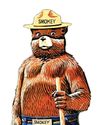
Muse Science Magazine for Kids
FIRE DANGER
WHY THE RISK OF WILDFIRES KEEPS GROWING
4 mins
Muse July 2025: The Story Behind Wildfires

Muse Science Magazine for Kids
The Miller NEW Normal
WHAT TODAY’S WILDFIRES TELL US ABOUT OUR FUTURE
8 mins
Muse July 2025: The Story Behind Wildfires

Muse Science Magazine for Kids
WOMEN AND FIREFIGHTING: A GOOD FIT
Jessica Gardetto is a firefighter. Her father was, too. “I grew up with my dad coming home smelling like wildfire and covered in soot,” she says.
1 min
Muse July 2025: The Story Behind Wildfires
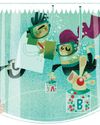
Muse Science Magazine for Kids
What is happening on your fingertips when they get all wrinkly in a hot tub?
—Felix G., age 10, Montana
1 mins
Muse July 2025: The Story Behind Wildfires

Muse Science Magazine for Kids
WHEN the SMOKE CLEARS
THE LINGERING EFFECTS OF THE RECENT PACIFIC PALISADES AND ALTADENA EATON FIRES
6 mins
Muse July 2025: The Story Behind Wildfires

Muse Science Magazine for Kids
PICKING TEAMS
Keep it fair with a strategy that relies on geometry.
2 mins
Muse July 2025: The Story Behind Wildfires
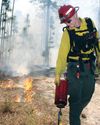
Muse Science Magazine for Kids
SHAN CAMMACK
WILDLIFE BIOLOGIST AND FIRE SAFETY OFFICER
3 mins
Muse July 2025: The Story Behind Wildfires
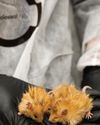
Muse Science Magazine for Kids
Scientists Create Mice With Woolly Mammoth-Like Fur
RESEARCHERS AT A COMPANY IN TEXAS ARE WORKING TO CREATE A LIVING ANIMAL THAT RESEMBLES THE EXTINCT WOOLLY MAMMOTH. Recently, they produced mice with traits of the large mammal. The mice all have coats with mammoth-like fur, and some of the small mammals also have genes that help them store fat. Both features would help the animals survive in the cold Arctic, where the woolly mammoth once lived.
1 min
Muse July 2025: The Story Behind Wildfires
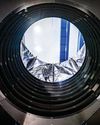
Muse Science Magazine for Kids
Cool Sunshade Added to the Nancy Roman Space Telescope
THE NANCY ROMAN SPACE TELESCOPE IS A NEW TELESCOPE THAT NASA IS BUILDING AND WILL LAUNCH INTO SPACE, LIKELY IN EARLY 2027.
1 min
Muse July 2025: The Story Behind Wildfires
Translate
Change font size

